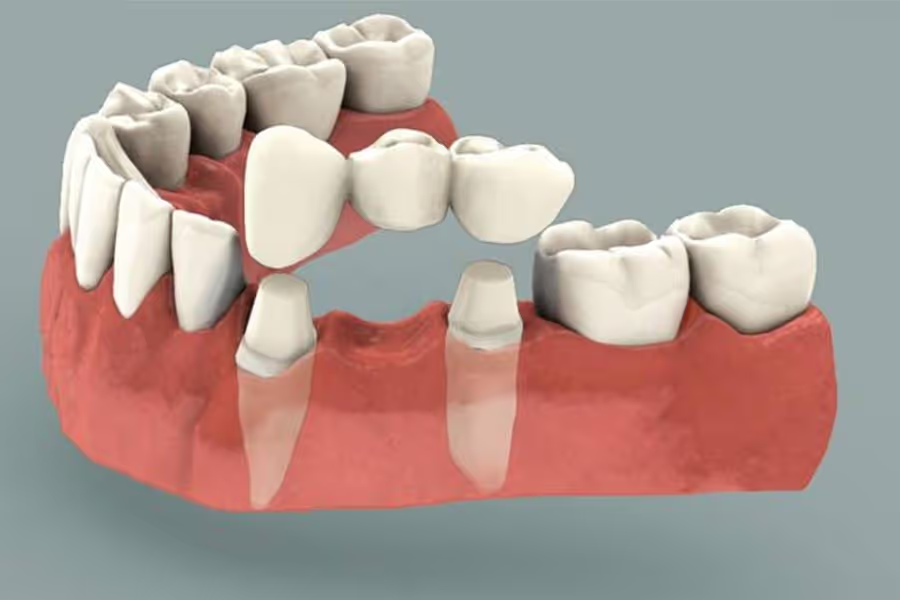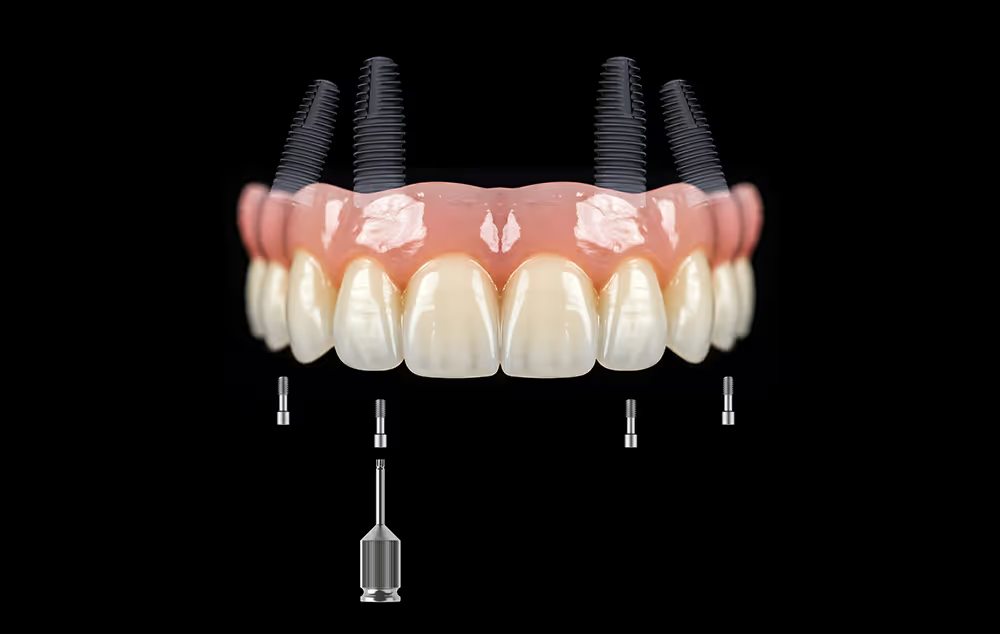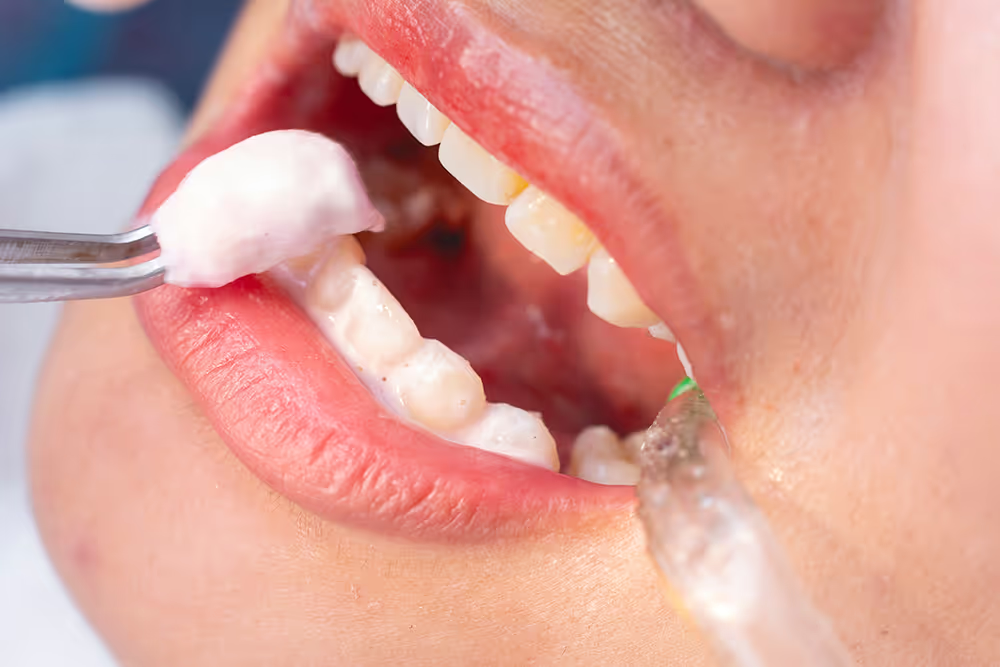Have you lost a tooth and are now wondering what your options are? Or maybe you know it is something that is coming up? The following will give you an idea of advantages and disadvantages of your 4 options are - our professional team of dentists can then give you more specific advice based on your individual circumstances.
The 4 options are:
- Do nothing, leave the gap
- Denture
- Dental Bridge
- Implant
1. Nothing – no restoration. Leave everything as it is
This is the cheapest, easiest option. However, there are a few downsides to doing nothing, of course.
- One is the body doesn’t tend to keep anything it doesn’t need - because this bone is no longer serving a purpose your body will start to resorb it away. The width can decrease about 50% in the first year. So, if you decide to replace it in the future, it gets harder and more expensive. If it is a top tooth, your sinus floor drops down as well.
- The quality of the gum can reduce and we can lose the hard, attached gum that is associated with teeth.
- All the other teeth shift and change. The teeth next door will tilt into the gap, and the tooth opposite will continue to grow down (overerupt). This will change your bite and can create issues in the long term.
- Teeth come in pairs (top one and a bottom one), so if you lose one of them, you're essentially losing the function of both. Ask your dentist to assess whether the other tooth is biting with any other teeth as this will determine how much it will keep growing down
- There are only so many teeth you can lose before it begins to affect your ability to chew and enjoy your food. If you lose the first molar this is the biggest drop in chewing function. We believe food is one of the greatest joys in life, so please don’t take this decision lightly
2. Denture or Plate
- This is not a good option for a single tooth unless it is your very front tooth. Their main advantage is that they are the cheapest way of replacing multiple missing teeth. If they are plastic (acrylic), they can be added to easily, so if you lose any more teeth, we can use your old denture. This, however, comes at the drawback that they are more bulky.
- Your ability to chew efficiently is decreased compared to natural teeth or the other replacement options. The force at which you’re able to bite with is only about 25% compared to teeth. Food choices are affected and quality of life, including gut health is affected.
- Dentures move and can cause ulcers, can be very uncomfortable. 50% of lower dentures are not worn to eat with.
- After losing a tooth, the bone shrinks away - dentures tend to accelerate this bone lose. This means the longer you have dentures, the less bone you have to hold your dentures in
- Repair of abutment teeth rate-60% at 5 years and 80% at 10 years. This means that the teeth that are used to hold the dentures in (we call them ‘abutment teeth’) suffer more decay, wear and “stripping” (where the gum gets damaged from the clasps). We find the teeth that we use to support the dentures are at more risk of being loose, having disease and bacterial build up with half of them being lost within 10 years.
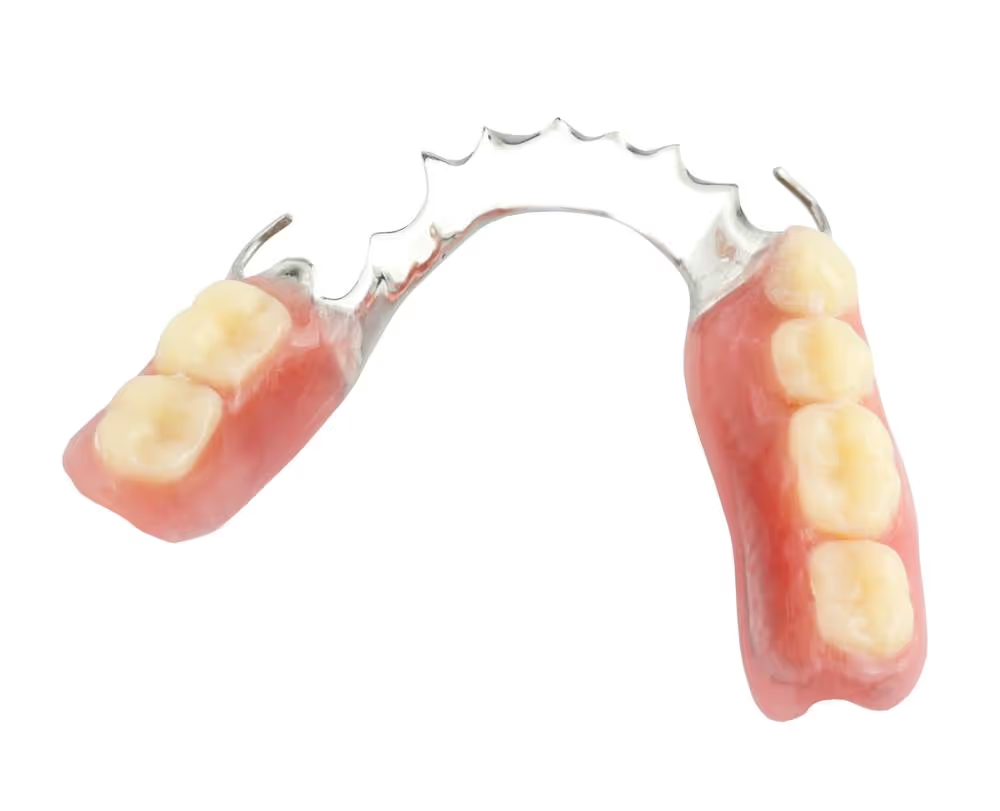
3. Dental Bridge (Fixed)
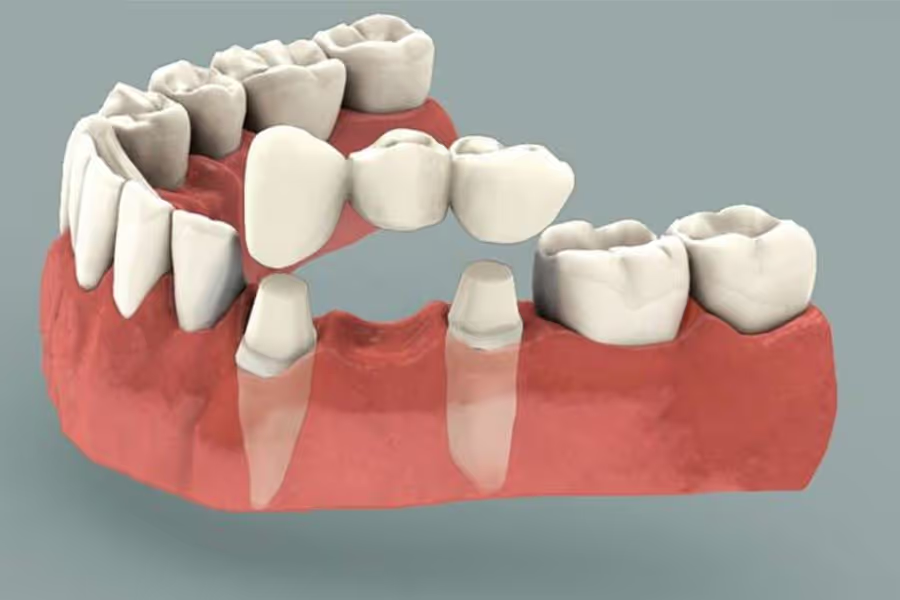
There are several types of dental bridges. They use the teeth next to the gap to support the missing tooth (see the image) by connecting everything to each other. The bridge consists of 2-3 crowns that are one piece, the missing crown hovers over the gum. They are made with porcelain or metal. It looks very natural, does not move and gives a good chewing function.
Advantages compared to implants:
- We can replace your missing tooth within 2 appointments, with no pain or surgery or downtime.
- Good option for those who have medical conditions or contraindications to implants, for example, osteoporosis medications, severe diabetes, heavy smoking.
- An alternative for people with severe gum disease as implants are badly affected by gum disease
Disadvantages compared to implants:
- Harder to clean as your teeth are joined.
- Crowning the supporting teeth can be destructive to this tooth as it needs to be shaped. This can be an advantage if this tooth required a crown anyway.
- Estimated mean life span (50% survival) reported at 15 years. If the teeth supporting the bridge fails then the whole bridge fails, as we join them into one unit. Caries (decay) on the abutment (tooth holding the bridge) is the most common cause of failure. 15% of teeth holding the bridge require a root canal through the bridge.
4. Implant
An implant is a titanium screw placed into the jaw bone to mimic the root of a tooth. The jaw bone fuses to it as it heals. Then we put a crown on top.
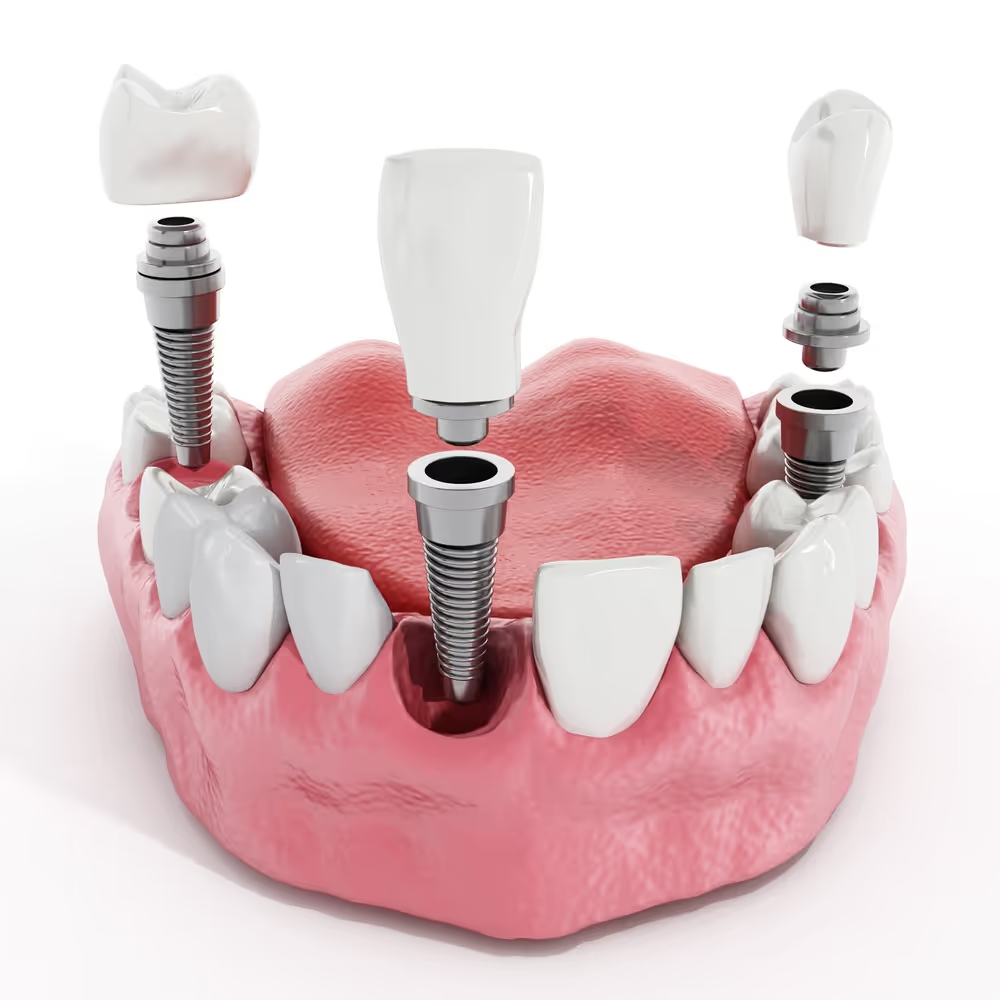
Advantages of single tooth implant
- Highest success rate (better than 97% for 10 years)
- Decreased risk of caries or endodontic (nerve) problems on adjacent teeth when compared to bridges and dentures
- Doesn’t damage the adjacent teeth. This is really important. It is a unit independent of the other teeth. So if the other teeth have issues, the implant does not rely on them for its success
- You can still floss and brush your teeth as per normal – so keeping good oral hygiene is easier
- Psychological advantage – treat it similarly to your natural teeth. They look great as well, and you never have to feel worried about laughing too hard and your teeth falling out
- Keeps the other teeth in their positions (stops the tilting and movement we talked about earlier)
- Keeps good muscle tone (muscles don’t have to adapt like they do in dentures) and allows you to maintain the muscles of chewing and facial expression
- Gives you great appearance, chewing function and force, and does not interfere with speech (dentures do)
- You can also do implant supported bridges (when you want to replace multiple teeth)
Other Blogs
All-On-X is a full-arch restoration technique where a full set of upper or lower teeth is supported by dental implants. These implants are strategically placed to maximise support, even in patients with bone loss.
Dental treatment is not cheap. There’s no denying that. So, what tips do we have to reduce your dental costs?
Decay occurs when acids released by bacteria creates an acidic environment in which your teeth donate their minerals.


